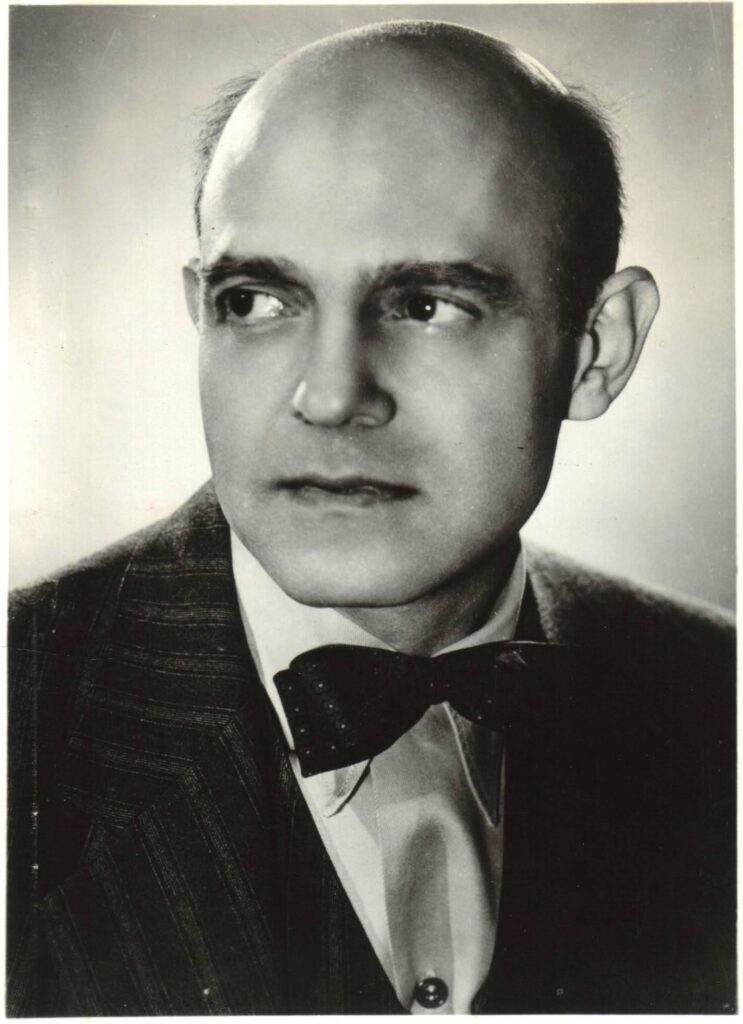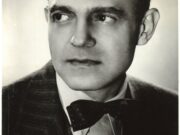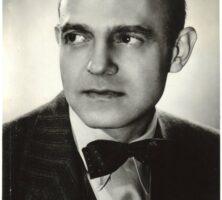A multitalented musician, Georgia native Beryl Rubinstein achieved success as a piano virtuoso, music educator, and composer. He taught at the Cleveland Institute of Music in Cleveland, Ohio, from 1921 until his death, serving as director of the school for the last two decades of his life.

Courtesy of Cleveland Institute of Music
Beryl Rubinstein was born in Athens on October 26, 1898, to Matilda Abrahams and Isaac Rubinstein, who was rabbi of the Congregation of the Children of Israel. When Beryl was six, his father discovered his extraordinary musical talent. From 1905 to 1911 Rubinstein toured the United States as a child prodigy. On December 31, 1911, the thirteen-year-old made his New York debut at an evening concert at the Metropolitan Opera House.
For the next several years, Rubinstein studied in Berlin, Germany. Upon his return to the United States, the young artist gave his “second debut” in the form of a recital at New York’s Aeolian Hall on October 13, 1916. For the next several years Rubinstein continued to develop as an artist, receiving mostly positive reviews. He developed into a seasoned performer not only by giving recitals but also by touring for a time as an assistant pianist for the Duncan Dancers, a troupe headed by the legendary Isadora Duncan.
In 1921 Rubinstein joined the piano faculty of the Cleveland Institute of Music (CIM), which had been founded the previous year. In 1925 he became head of the piano department, in 1929 he was chosen to be dean of faculty, and in 1932 he became director of CIM, a post he would hold until his death two decades later. In 1925 Rubinstein married a Cleveland native, Elsa Landesman. The couple had a daughter, Ellen, and a son, Beryl David.
Despite his administrative and teaching duties at CIM, Rubinstein was an active performing musician and composer. With Arthur Loesser he formed a highly regarded piano duo that presented concerts widely. His career as a soloist prospered as well, and he performed throughout the United States and Europe.
Although most of his works as a composer were for solo piano, he also tackled larger forms, creating works for piano and orchestra, as well as an opera. A number of his solo piano works have remained in the repertory, including the suites A Day in the Country, Four Fantastic Sketches, and Musical Fancies for the Piano, as well as a sonatina in C-sharp minor, and a sonata for flute and piano. Rubinstein’s piano set of transcriptions from George Gershwin’s Porgy and Bess also remains in the repertory. His large-scale works, including a scherzo for orchestra (1927) and concerto for piano and orchestra in C major (1936), are largely forgotten, as is his only opera, The Sleeping Beauty. Written to a libretto by John Erskine, The Sleeping Beauty received its premiere at New York’s Juilliard School of Music in January 1938.
Rubinstein’s brilliant piano performances were preserved for posterity on only a few rare occasions. He recorded Ernest Bloch’s Sonata for Violin and Piano (“Poeme Mystique”) with Joseph Gingold for RCA Victor in the 1930s on Album M-698, which is now a rare collector’s item. Several other recordings of Rubinstein’s performances exist, including one in which he and Arthur Loesser perform Bela Bartok’s Sonata for Two Pianos and Percussion, and another, made at a Library of Congress recital in December 1937, in which he plays the keyboard part of Ernest Chausson’s Concert in D Major for Violin, Piano, and String Quartet.
Soon after the attack on Pearl Harbor in December 1941, which precipitated the United States’ entry into World War II (1941-45), Rubinstein joined the U.S. Army with the rank of captain. As a member of the army’s Fifth Service Command, he had the responsibility of coordinating that unit’s wartime musical activities. From 1942 to 1944 he traveled 20,000 miles and participated in seventy-five concerts for servicemen in North Africa, Sicily, and Italy. After the war Rubinstein returned to Cleveland to resume the directorship of CIM, which expanded greatly over the next decade.
In May 1952 Rubinstein visited his home state, performing in Athens and Atlanta. In Athens he was present for the founding of a new organization, Georgia Composers, formed by Hugh Hodgson, who was head of the University of Georgia music department. In a recital at the university, Rubinstein performed a selection of his own piano compositions as well as Frederic Chopin etudes and Joseph Haydn sonatas. He died in Cleveland only a few months later, on December 29, 1952. In its obituary, the Cleveland Press lamented the loss that Rubinstein’s death represented to the musical life of that city, praising the late musician for “his artistic idealism and perfectionism.” A scholarship fund was created in his honor, and a noted CIM alumnus, Hale Smith, composed In Memoriam: Beryl Rubinstein, a work for mixed chorus with chamber orchestra (or piano). In 1964 Smith’s work was recorded by the Kulas Choir and Chamber Orchestra, conducted by Robert Shaw.






